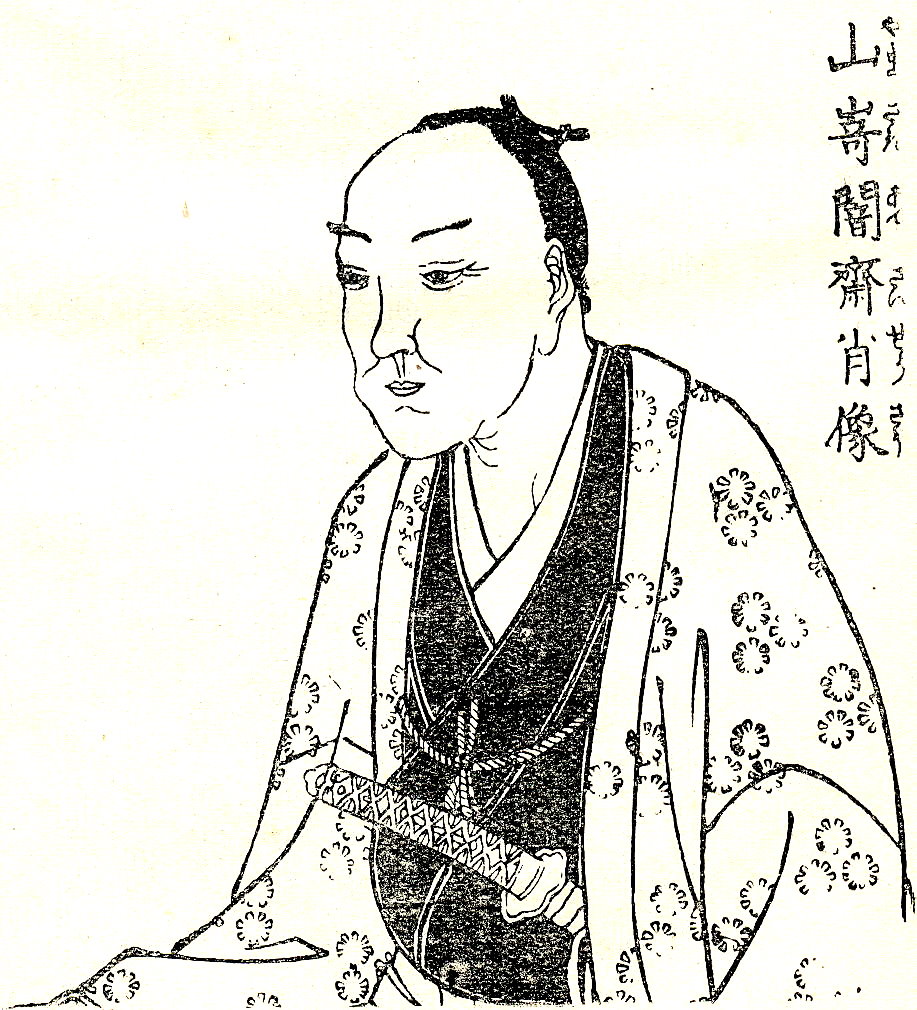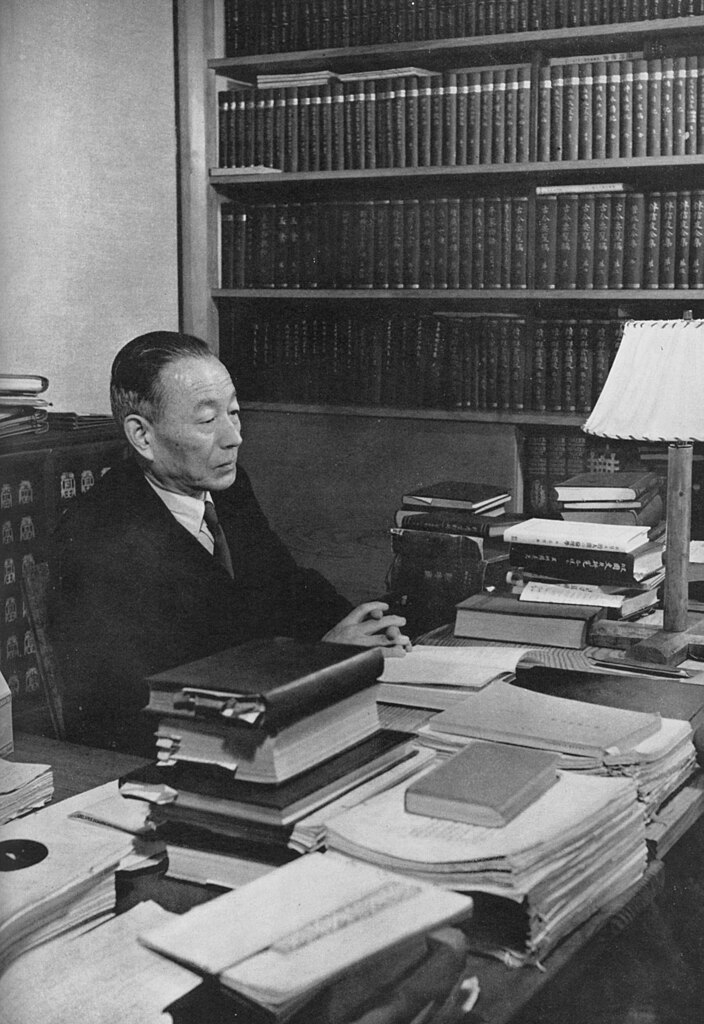
“Indeed, there are moments that are dynamically unified as the movement of negation: fundamental emptiness, then individual existence, and social existence as its negative development. These three are interactive with one another in practical reality and cannot be separated” (Watsuji Tetsuro – Ethics).
In the previous page, entitled “The Dialectical Nature of Watsuji’s Ethics,” the basic contours of Watsuji’s ethics were presented using two rather common Japanese concepts – that of ningen, meaning “human being,” and aidagara, meaning “betweenness.” Given that ningen combines the word nin (the individual person) and gen (the social person), the path to a mature ethical life was described as a dialectical process whereby nin is negated to open up to gen, and gen negated to restore nin, through the self-negating activity of betweenness, which, for Watsuji, is another name for emptiness.
A description of this process as it unfolds in our lives from birth to adulthood was provided as a concrete example of how this process plays out in our lives and that of our children. A first affirmation of our individual nin against our original merging with mother occurs in what is known as the “terrible twos” when the toddler is prone to frequent tantrums. It is followed by a willingness to be more flexible in order to secure the attention of grown-ups, and play with school friends. Then a further rebellious disruption occurs in the adolescent who needs to “find” who (s)he is as a nin, until in early adulthood a final acceptance of our social gen person is normally achieved.
Kasulis notes that in Western science, this series of phases is said to be triggered by cognitive and biological factors – “conceptual and linguistic capacity for the youngster or hormonal shifts for the adolescent.” But he adds: “yet, as we have seen in his critique of naturalistic environmental determinism, Watsuji rejects the premise that material factors alone can ever generate ethical norms. That was one of his criticisms of Marxism as well.” So “what supplies the impetus for the negations at the heart of his theory of ethics?” To answer this question, Kasulis tells us that we should delve more deeply into Watsuji’s logic of negation.
Watsuji’s logic of negation
Kasulis writes that “Watsuji understands negation in terms of its core emptiness” which he breaks down into three moments. In Watsuji’s words: “Indeed, there are moments that are dynamically unified as the movement of negation: fundamental emptiness, then individual existence, and social existence as its negative development. These three are interactive with one another in practical reality and cannot be separated (Rinrigaku).”
Returning to the development of the individual from birth to moral maturity, Kasulis notes that he had presented “logical relations as a temporal sequence, “first this; next this; then that.”
Temporal versus Logical
Kasulis explains: “[the temporal sequence] can only take us so far, however, because logical relations are not inherently temporal. For example, consider this if-then statement that clearly implies temporality: “If we finish the meeting early, then we will be home in time for the game.” Finishing the meeting must occur before being home for the game. But contrast this with the following if-then statement “If it is raining, then there will be moisture in the air.” Such an if-then statement is strictly logical – the raining does not occur before the moisture’s being in the air. The raining is a logical but not temporal priority.”
When applied to Watsuji’s quote about the three moments of the dialectic, we see that it has a logical character that is not necessarily temporal. Kasulis states: “The point for Watsuji is that nin and gen are logically interdependent terms and, as such one cannot exist or have meaning without the other,” adding that “the word ‘moment’ in the quotation does not refer to a temporal instant. In dialectical logic, a moment is a pivoting point between a term and its opposite twin term.”
The point here is that, when one negates one’s individual nin, one does not logically annihilate it, and be left with only the social gen, as is the case when annihilating something at the level of ordinary reflective consciousness. As ningen we remain a dual person made up of nin and gen. In Kasulis’ words: “In Watsuji’s theory, to be an individual is to be an-individual-as-opposed-to-the-social; to be the social is to be the-social-as-opposed-to-being-an-individual. If either pole were to completely eradicate the other, neither pole could exist. There cannot be a positive pole in a magnetic field without a correlated negative pole and vice versa. If the individual were to completely disappear into the social or the social into the individual, therefore, both poles would disappear into the foundational emptiness, the betweenness as what is not yet differentiated. This is a rather subtle and technical distinction. Why does Watsuji need to stress it?”
Moral versus Amoral

Kasulis answers: “For Watsuji, even as the social is negated for the sake of expressing the freedom of the individual, the individual – to maintain its identity as individual – must maintain a role for the social. To be an individual is to set oneself apart from the social … That is why a demand for personal expression often assumes the form of a counter-cultural social movement: the hippies, the early women liberationists, Green Peace activism, or today’s Goths, for instance. To oppose and affirm the nin side over the gen side requires the gen to remain to some extent, even if only as the target of criticism.”
Watsuji, however, does not stop at this need to maintain the individual and the social for the dialectical process to take place. He sees it as an entry point to differentiate conducts that are “moral” and those that are “amoral” in a way we rarely see them in the West.
Kasulis explains: “If I oppose the social status quo, therefore, I have two options. First, I can dismiss the status quo while recognizing it (I can “drop out” but only insofar as I maintain the reality of what I am dropping out of). The other alternative is that I can be an agent of change who confronts the social as a critic, prophet, innovator, revolutionary, or whatever. In Watsuji’s ethical system, the first option is amoral insofar as it tries to elude the dialectic of ningen by avoiding moral activity or conduct (koi). By doing so, he insisted, I would be inauthentic to what I am as a human being. So, it is the second option – that of confrontational opposition – that interests him.”
In the West, we start thinking about ethics when it comes to take action, which entails having to choose between two or more actions in the future. For Watsuji, “the ethical predicament is less about future action than about present self-definition: how am I to be?” We could say that it is more like a “disposition.” That question is inseparably both about me as free individual (the nin pole) and about me as a social being living in a particular collective and physical place (the gen pole). Thus, moral action is not simply a movement carried out by an individual; it must always occur vis-a-vis a social awareness as well. Whenever a human being acts ethically, the agency involves both an individual and social dynamic … Arising from the betweenness of ningen, moral action always contains a dual negation, simultaneously pulling us toward both the social and individual poles defining our human existence.”
This is why infants, “insofar as they have not yet fully differentiated the social and individual, are capable of human movements but not of moral conduct.” Though of course, they do have the potential to achieve it, and it is the aim of child rearing to actualise it.
Kasulis notes that Watsuji also mentions that, in addition to infants, people who find themselves in “a strictly defined stultified social status quo in which [they have to] behave robotically without reflection or resistance” are also not able to behave morally. He does not however believe that they would be incapable of it, should their circumstances improve, since he acknowledges that the past influences present relationships, but “that should never mean that the past determines the present.”
This brings us to a point that may not have been clear until now. In Kasulis’ words: “For ethical relations to occur, the relevant parties must recognize the impact of past interrelations, but only as part of an effort to establish new relations. There is no ethics in simply maintaining a status quo because, says Watsuji, ethical conduct entails changing the status quo of present interrelations. An ethical agent is always, in that respect, an agent of change.” This of course confirms that Watsuji conceives his ethics as a path of practice comparable to that of a Buddhist practitioner seeking spiritual realisation. Not being religiously inclined, he has staged this ethical path in the context of a lay life in the midst of society, instead of that of a monastic setting. Also, whereas each self-negation carried out by betweenness is strongly reminiscent of the monastic practice of self-emptying, there is one significant difference, which Kasulis does not mention: in Buddhism, the onus is on the negation of one’s (ego)-self; for Watsuji, who as a young man had been fascinated by Western literature, especially Byron whom he wished to emulate, by becoming a poet himself, the individual self is not the only target for self-negation, it is on a par with the self-negation of the social self in a dialectical process. As Robert Carter notes in his biography of Watsuji, “he was also taken with Nietzsche’s philosophy. It was the emphasis on individuality that enthralled him, a way of life so different from the Japanese emphasis on the importance of the group.” Later on he had become an avid reader of Soseki Natsume, originally for his emphasis on individuality, though later on, Soseki, as Watsuji himself, had come back to an appreciation of Japanese culture. Just as Nishida had on many occasions criticised the lack of critical spirit among the Japanese, something of the Western love of (individual) freedom had already planted seeds in the Japanese psyche of the Kyoto School thinkers.
Trust and Truth
Those of us who have engaged in interfaith work may have been puzzled by the absence of specific reference to “values” in Eastern spirituality. We can of course encounter terms such as truth, good and beauty, the values sought in Christianity, but whereas Christians are keen to emphasise the need to restore values, Buddhists are rarely using the word, and instead insist on self-negation.
Watsuji tells us that the “ongoing reconstitution of interrelations, can effectively occur only in a context of “trust” and “truth.” Kasulis then notes that “although those terms certainly have important roles in western ethics, when they appear in a modern Japanese context, the Confucian and Shinto overtones become critical. “Trust” is one of the primary Confucian virtues driving harmonious interpersonal relations while “truth” (as genuineness) is fundamental to all Shinto relations involving human beings. Watsuji linked trust and truth by arguing that trust lies in one’s relying on the other to be genuine and forthright. In effect, to be genuine is to be trustworthy.”

In addition, Kasulis also recalls that in the philosophy of 17th century Yamazaki Ansai, which fused Shinto and Confucianism, “Ansai theorized that both Confucianism and Shinto derived from a common element of reverence, a human sensivity to the transcendence of either the Confucian Heaven or the Shinto kami. Furthermore, he believed that the link between the transcendent and this world was related to the function of “principle” (Jp ri, Ch li). Thus, Ansai suggested reverence had a metaphysical anchor.”
In Judeo-Christian religions, values are likewise associated with a metaphysical anchor in a transcendent God. This is not, however, the case for Watsuji. Kasulis asserts that “Watsuji’s theory, on the contrary, has no role for a transcendent object of reverence outside this world. His philosophical anthropology recognizes nothing outside this world. Even more strongly, Watsuji’s discussion of truth, with its emphasis on the authenticity of ningen, precludes any consideration of something like ri that connects this world to a metaphysical reality … Although some of his terms – emptiness, trust, genuineness, and so forth – have associations with spiritual traditions, Watsuji’s ethics is strictly humanistic (or secular) as opposed to religious.” Still, he adds “even if ethics is not directed toward a transcendent value, it must, to be an ethics at all, be normative in some sense. There must be value somewhere. Where?”
Kasulis answers: “Watsuji had one obvious option: value must be found in the dynamic of ningen itself, a dynamic permeated with trust and reliance, both in oneself (the nin side of human being) and in the collective (the gen side of human being). It is not “in God (or kami) we trust,” but in the interrelationality of ningen. We do not seek truth outside us (or in some abstract principle). Rather we discover it within us as ningen, our fundamental humanity living in the midst of those to whom we must be true.”
Sources:
Thomas P. Kasulis – Engaging Japanese Philosophy
Robert E. Carter – The Kyoto School

